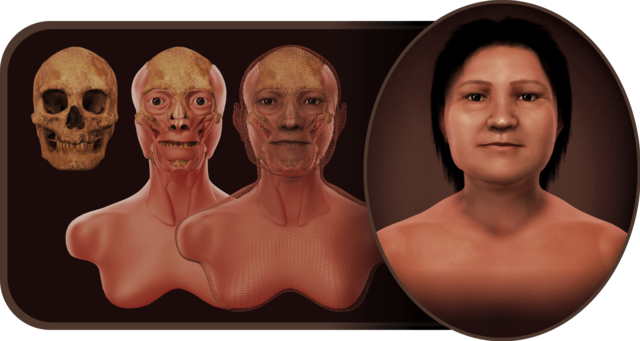Top Qs
Timeline
Chat
Perspective
Indigenous peoples in Uruguay
From Wikipedia, the free encyclopedia
Remove ads
Remove ads
Indigenous peoples in Uruguay or Native Uruguayans, are the peoples who have historically lived in the modern state of Uruguay. Because of genocidal colonial practices, disease and active exclusion, only a very small share of the population is aware of the country's Indigenous history or has known Indigenous ancestry.[3][4]



Scholars disagree agree about the first settlers in what is now Uruguay, but there is evidence of human presence from 10,000 BCE. Indigenous Uruguayans disappeared in the 1830s and, with the exception of the Guaraní, little is known about these peoples and even less about their genetic characteristics.[5] The Charrúa peoples were perhaps the best-known Indigenous people of the Southern Cone in what was called the Banda Oriental.[6] Other significant tribes were the Minuane, Yaro, Güenoa, Chaná, Bohán and Guaraní, and the Arachán. Languages once spoken in the area include Charrúa, Chaná, Güenoa, and Guaraní.
A 2005 genetic study showed 38% of Uruguayans had some Indigenous ancestry.[7][8] In the 2023 Census, 6.4% of the population reported having Indigenous ancestry.[9] A 2004 DNA study in the American Journal of Human Biology suggested that the Native American contribution to Uruguay's genetic composition may be far higher than is commonly assumed.[10]
Remove ads
History
Summarize
Perspective
Thousands of years ago, a local culture developed in nowadays northern Uruguay, known as Hombre del Catalanense. Afterwards, in pre-colonial times, Uruguayan territory was inhabited by small tribes of nomadic Charrúa, Chana, Arachan and Guarani peoples. They were semi-nomadic people who survived by hunting, fishing and gathering and probably never numbered more than 10,000 – 20,000 people.[11] It is estimated that there were about 9,000 Charrúa and 6,000 Chaná and Guaraní at the time of contact with the Spanish in the 1500s. By the time of independence, some 300 years later, there were only about 500 native people remaining in Uruguay. The decline in the native population was due to disease, intermarriage, and persecution. With little immunity to diseases brought by European settlers, native peoples and culture were gradually diminished.[citation needed]
The genocide of the Charrúa culminated on April 11, 1831 with the Massacre of Salsipuedes, where most of the Charrúa men were killed by the Uruguayan army on the orders of President Fructuoso Rivera. The remaining 300 Charrua women and children were divided as household slaves and servants among Europeans. By 1840 there were only 18 surviving Charrua in Uruguay.[12] According to the history professor and journalist Lincoln Maiztegui Casas, “the disappearance of the Charrúa people was a gradual process that took more than 200 years, and the root cause was territorial occupation by Europeans”.[13]
Remove ads
Significant peoples
Summarize
Perspective
Charrúa
The Charrúa are an Indigenous people or Indigenous Nation of the Southern Cone in present-day Uruguay[14] and the adjacent areas in Argentina (Entre Ríos) and Brazil (Rio Grande do Sul).[15][16] They were a semi-nomadic people who sustained themselves mainly through hunting and gathering. Since resources were not permanent in every region, they would constantly be on the move.[17] Rain, drought, and other environmental factors determined their movement. For this reason they are often classified as seasonal nomads.[17]
The Charrúa people were massacred in a campaign in 1831 by the Uruguayan Army known as the Massacre of Salsipuedes. Though largely erased from modern histories, some communities of the Charrúa survived outside of Uruguay in Argentina and Brazil. It is believed that there are approximately between 160,000 and 300,000 individuals in Uruguay, Argentina, and Brazil today who are descendants of surviving Charrúa.[18] Contemporary descendants of the Charrúa have created organizations and advocate for the memory of the Indigenous people.Guarani

The Guarani are a group of culturally-related Indigenous peoples of South America. They are distinguished from the related Tupi by their use of the Guarani language. The traditional range of the Guarani people is in what is now Paraguay between the Paraná River and lower Paraguay River, the Misiones Province of Argentina, southern Brazil once as far east as Rio de Janeiro, and parts of Uruguay and Bolivia.[19]
Although their demographic dominance of the region has been reduced by European colonisation and the commensurate rise of mestizos, there are contemporary Guarani populations in Paraguay and parts of Argentina and Bolivia. Most notably, the Guarani language, still widely spoken across traditional Guarani homelands, is one of the two official languages in Paraguay, the other one being Spanish.[20] The Paraguayan population learns Guarani both informally from social interaction and formally in public schools. In modern Spanish, Guaraní also refers to any Paraguayan national in the same way that the French are sometimes called Gauls.Guenoa
Remove ads
See also
References
External links
Wikiwand - on
Seamless Wikipedia browsing. On steroids.
Remove ads
